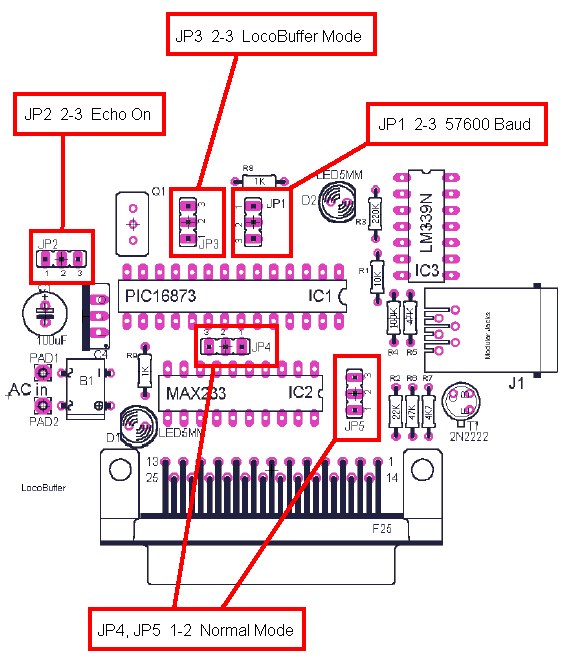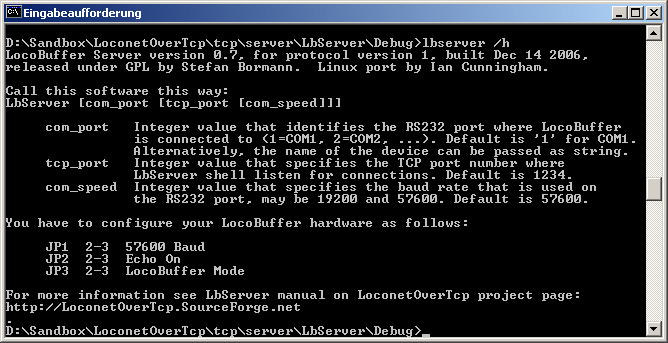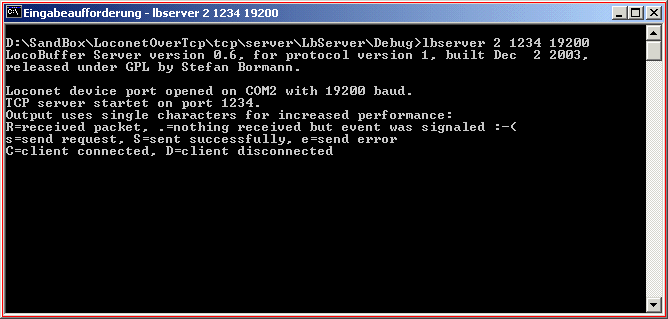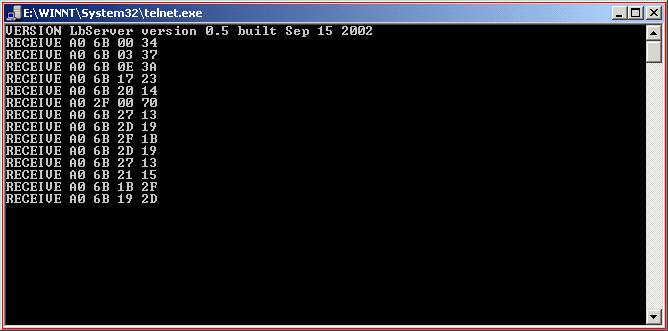
This page pretents to be a users manual for a piece of software called "LbServer".
LbServer talks through a RS232 COM port of your PC with a LocoNet interface.
Two interfaces are supported:
LocoBuffer and
Intellibox.
Additionally it accepts TCP/IP connections from LoconetOverTcp
client programs.
All LocoNet traffic is forwared by the interface to the PC. LbServer receives
the traffic from the COM port and forwards it to all connected client
programs.
A client program can request LbServer to send a LocoNet packet. LbServer
forwards this request to the interface and notifies the client
program about the success when reading the echo of the packet from
the interface. LbServer comes in versions for M$ Windows and Linux.
For information about the LoconetOverTcp project, see the project
home page:
http://LoconetOverTcp.SourceForge.net
This only applies to you if you are using
LocoBuffer as your interface
between Computer and LocoNet. Otherwise skip to (2b)!
For LbServer to function properly, you have to configure
your LocoBuffer as follows. Set jumpers 1, 2, 3 to position 2-3 and
set jumpers 4, 5 to position 1-2:

This only applies to you if you are using the internal RS232 interface of an Intellibox for your computer to talk to LocoNet. Otherwise skip to (3)! For LbServer to function properly, you have to configure your Intellibox as follows.
If your LocoBuffer or Intellibox is connected to COM1, you want to use the default baud rate of 57600 Baud (which will only work for the LocoBuffer) and you like to use the default TCP port number of 1234, then you will just want to double click the LbServer.exe program file and be happy. If you are not satisfied with the defaults or if you are some kind of freak, you will want to open a DOS window and type in at the holy prompt:
LbServer /hYou see the result in the following screen shot:

LbServer 2 1234 19200This hopefully results in the following situation:

Now the server software is up and running.
Now you can start a client program. At program start the client program will ask you to what server you want to connect. As you will most likely run the server and the clients on the same PC, type in "localhost" as the server host name. If you use the default port number, type in "1234" as TCP port number:

If you are curious about the TCP protocol, you can use the telnet client that is part of all windows installations. Use a command line like this:
telnet localhost 1234After telnet connected, turn at your favorite handheld throttle to see something like this:

There is an UML class diagram that shows the internal structure of the software.
For further information, see on the project home page: